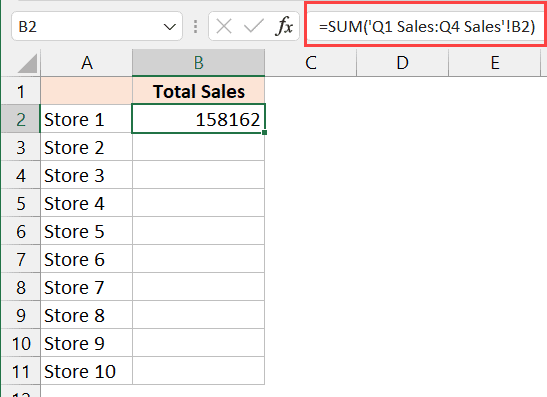5 Ways to Calculate Only the Current Sheet in Excel

If you work with large, complex spreadsheets in Excel, performance can often become a challenge. One effective strategy to improve Excel performance is to calculate only the current sheet instead of the entire workbook. Here’s a detailed guide on five methods you can use to calculate only the current sheet in Excel:
1. Using the F9 Key

The F9 key can be a simple way to recalculate specific cells or areas of a worksheet:
- Select the cells or range you want to recalculate.
- Press F9.
Note:

⚠️ Note: This method only forces Excel to recalculate the selected cells, not the entire sheet.
2. Manual Calculation Mode

By switching to Manual calculation mode, you can control when Excel recalculates:
- Go to Formulas > Calculation Options.
- Select Manual.
- Now, calculations won't happen automatically. To calculate the current sheet:
- Press Shift + F9 to recalculate the current worksheet.
3. Application.CalculateSheet Method

VBA provides a method to calculate just the active sheet:
- Open the Visual Basic Editor (press Alt + F11).
- Insert a new module and add the following code:
Sub CalculateCurrentSheet()
Application.CalculateSheet
End Sub
4. Use Named Ranges

Named ranges can help isolate calculations:
- Define a named range for the cells or range you want to calculate.
- To calculate:
- Select the cells by name, then press F9.
- Alternatively, use a macro to calculate only the named range:
5. Sheet Specific Formulas

You can use formulas that refer only to the current sheet:
- When writing formulas, ensure that they only reference cells within the current sheet. Use INDIRECT or CELL functions if needed to avoid cross-sheet calculations.
- This approach minimizes dependencies on other sheets, allowing for quicker, targeted recalculation.
| Method | How to Use | Best Used For |
|---|---|---|
| F9 Key | Press F9 after selecting cells. | Quick cell or range recalculation. |
| Manual Calculation | Formulas -> Calculation Options -> Manual, then Shift + F9. | Control over calculation timing. |
| Application.CalculateSheet | Run VBA macro. | Automated sheet calculation. |
| Named Ranges | Define a name, then recalculate with F9. | Isolating specific ranges for calculation. |
| Sheet Specific Formulas | Write formulas that reference only current sheet. | Reducing inter-sheet dependencies. |

By implementing these methods, you can significantly boost the performance of your Excel spreadsheets, especially when working with data-intensive worksheets. Remember that understanding Excel calculation settings and the implications of recalculation can make your work more efficient and seamless.
FAQs on Calculating Only the Current Sheet in Excel

What is the difference between F9 and Shift + F9 in Excel?

+
F9 recalculates only the selected cells, whereas Shift + F9 recalculates the entire current sheet.
Can I automate the process of calculating only the current sheet?

+
Yes, using VBA you can automate this process with the Application.CalculateSheet method or through macros that manually trigger calculations.
Does Excel automatically calculate all sheets?

+
By default, Excel is set to automatic calculation, which includes all linked sheets in the calculation.